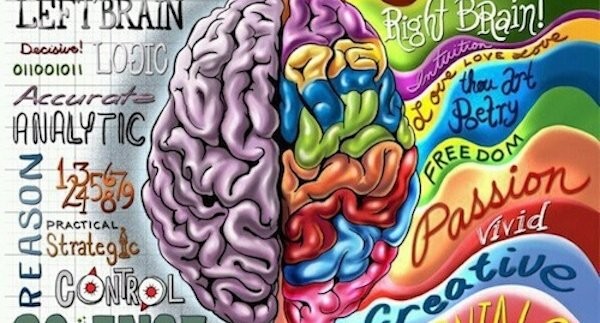In recent years, there has been an increasing recognition of the significant impact that healthy emotional development has on an individual’s overall well-being. This is especially true for individuals who have experienced trauma or are in the process of recovering from addiction or mental health issues. One key factor that plays a vital role in supporting healthy emotional development is attachment.
Attachment refers to the bond formed between a child and their primary caregiver, which influences their emotional and social development throughout their lives. However, the importance of attachment does not diminish as we grow older. Attachment continues to play a crucial role in our relationships and overall emotional well-being, even in residential settings.
Residential settings, such as treatment centres or therapeutic communities, provide a unique environment that can greatly impact an individual’s emotional development and recovery journey. Understanding the link between attachment and recovery in these settings is essential for professionals and caregivers to effectively support individuals in their healing process.
This blog post aims to explore the connection between attachment and healthy emotional development in residential settings. We will delve into the theory of attachment, its impact on emotional development, and how it manifests in residential settings. Additionally, we will discuss strategies and interventions that can be implemented to promote healthy emotional development and address the challenges that may arise.
By understanding the importance of attachment and its role in emotional development, professionals and caregivers in residential settings can create an environment that fosters healing, growth, and recovery. Join us as we delve into this topic and discover the transformative power of attachment in supporting healthy emotional development in residential settings.
Understanding the Basics: The Importance of Emotional Development and Attachment to Recovery
Emotional development and attachment are fundamental aspects of human growth and well-being. In the context of recovery, understanding the importance of emotional development and attachment becomes even more crucial. This section will provide an overview of the basics, highlighting the significance of emotional development and attachment in the recovery process.
The Importance of Emotional Development
Emotional development refers to the gradual growth and maturation of a person’s emotional capacities, including their ability to regulate emotions, express feelings, and form meaningful connections with others. It plays a vital role in shaping an individual’s overall mental health, resilience, and ability to navigate life’s challenges.
In the context of recovery, emotional development is essential for several reasons:
- Self-Awareness and Insight: Emotional development enables individuals to gain a deeper understanding of their emotions, triggers, and patterns of behaviour. This self-awareness is crucial for identifying and addressing underlying issues that contribute to addictive or self-destructive behaviours.
- Coping Skills: Developing healthy coping mechanisms is a vital component of recovery. Emotional development equips individuals with the skills to manage stress, regulate emotions, and cope with challenging situations without resorting to destructive behaviours.
- Relationship Building: Recovery often involves rebuilding and repairing relationships that may have been strained or broken due to addiction or mental health issues. Emotional development helps individuals establish and maintain healthy relationships built on trust, empathy, and effective communication.
The Role of Attachment in Recovery
Attachment, as originally theorized by John Bowlby, refers to the deep and enduring emotional bond that forms between an infant and their primary caregiver. Attachment continues to influence human behaviour and relationships throughout life. In the recovery process, attachment plays a pivotal role in several ways:
- Sense of Safety and Security: A secure attachment provides individuals with a sense of safety and security, which is crucial for their emotional well-being and recovery. Feeling supported and cared for in relationships fosters a sense of trust and stability, enabling individuals to focus on their healing journey.
- Emotional Regulation: Attachment experiences shape an individual’s ability to regulate emotions. A secure attachment provides a foundation for healthy emotional regulation, allowing individuals to manage intense emotions effectively during the ups and downs of recovery.
- Social Support: Attachment figures, such as supportive family members, friends, or treatment professionals, can serve as a source of social support during the recovery process. These relationships provide encouragement, guidance, and accountability, promoting sustained recovery efforts.
Understanding the significance of emotional development and attachment in recovery lays the groundwork for creating a supportive and nurturing environment within residential settings. In the following sections, we will explore the theory of attachment, its impact on emotional development, and how it manifests in these settings.
The Role of Attachment in Emotional Development
Attachment plays a crucial role in shaping an individual’s emotional development. This section will delve into the theory of attachment, its impact on emotional development, and how it influences individuals in their journey towards recovery.
The Theory of Attachment
The theory of attachment, initially proposed by John Bowlby, emphasizes the significance of early relationships and their impact on a person’s emotional well-being. According to this theory, infants are biologically predisposed to form strong emotional bonds with their primary caregivers as a means of survival and protection.
Bowlby identified four key attachment styles:
- Secure Attachment: Infants with secure attachments feel safe, loved, and protected by their caregivers. They develop a sense of trust and confidence, enabling them to explore the world and form healthy relationships.
- Anxious-Resistant Attachment: Infants with anxious-resistant attachment tend to be overly dependent on their caregivers and exhibit clingy behaviour. They may experience anxiety and uncertainty about their caregiver’s availability and responsiveness.
- Avoidant Attachment: Infants with avoidant attachment suppress their attachment needs and exhibit independence. They may appear distant and avoid seeking comfort or support from their caregivers.
- Disorganized Attachment: Infants with disorganized attachment display inconsistent and unpredictable behaviour. They may exhibit a mix of avoidant and anxious-resistance behaviours, often resulting from inconsistent or abusive caregiving.
The Impact of Secure Attachment on Emotional Development
Secure attachment sets the stage for healthy emotional development. When infants experience consistent and responsive care, they develop a secure base from which they can explore the world and form secure relationships. This secure base provides a sense of safety, comfort, and trust, which fosters emotional resilience and healthy emotional regulation.
Securely attached individuals tend to have the following characteristics:
- Emotional Regulation: They can regulate their emotions effectively, manage stress, and bounce back from setbacks.
- Self-Esteem and Self-Worth: They have a positive self-image and a healthy sense of self-worth, which contributes to their overall emotional well-being.
- Empathy and Compassion: They are capable of empathizing with others, understanding their emotions, and forming meaningful connections.
- Healthy Boundaries: They can establish and maintain healthy boundaries in relationships, recognizing their own needs while respecting the needs of others.
Attachment in Residential Settings
In residential settings, individuals may have experienced disruptions in their early attachment relationships. This can have a significant impact on their emotional development and recovery process. Understanding the role of attachment in these settings is crucial for creating an environment that supports healthy emotional development and healing.
Residential settings provide an opportunity to establish new attachment relationships with supportive caregivers, peers, and professionals. By fostering secure attachment experiences within these settings, individuals can develop the emotional resources necessary for successful recovery.
In the following sections, we will explore how residential settings can promote healthy emotional development through the creation of secure environments, structured routines, and positive relationships.
How Residential Settings Can Promote Healthy Emotional Development?
Residential settings play a vital role in supporting healthy emotional development for individuals in recovery. This section will explore various ways in which residential settings can promote and nurture emotional well-being.
Creating a Secure Environment
A secure environment is essential for individuals in recovery to feel safe, supported, and able to focus on their emotional growth. Residential settings can create a secure environment by:
- Safe and Comfortable Accommodations: Providing comfortable living spaces that promote a sense of safety and privacy.
- Clear and Consistent Rules: Establishing clear guidelines and rules that promote structure and predictability, helping individuals feel secure and understand expectations.
- Emotional Safety: Creating an environment where individuals feel safe expressing their emotions without fear of judgment or reprisal.
- Trauma-Informed Care: Implementing trauma-informed approaches that recognize and address the impact of past trauma on emotional well-being, ensuring that individuals are supported in their healing journey.
Implementing Structured Routines
Structured routines provide stability and predictability, which are crucial for promoting healthy emotional development. Residential settings can implement structured routines by:
- Daily Schedule: Establish a daily schedule that includes consistent meal times, therapy sessions, recreational activities, and self-care practices.
- Regular Check-Ins: Conduct regular check-ins with individuals to assess their emotional well-being, address any concerns, and provide support.
- Therapeutic Programming: Offering a variety of therapeutic programming options, such as individual therapy, group therapy, art therapy, and mindfulness practices, to promote emotional exploration and growth.
- Educational Opportunities: Providing educational opportunities on emotional intelligence, coping skills, and self-care practices to enhance emotional development and promote self-awareness.
Promoting Positive Relationships
Positive relationships are crucial for healthy emotional development and recovery. Residential settings can promote positive relationships by:
- Supportive Staff: Ensuring that staff members are trained in empathy, active listening, and supportive communication, fostering a nurturing and caring environment.
- Peer Support: Encouraging peer support and creating opportunities for individuals to connect with and learn from each other.
- Group Activities: Organizing group activities and team-building exercises that foster a sense of camaraderie, belonging, and social connection.
- Family Involvement: Involving families in the recovery process through family therapy sessions, educational workshops, and support groups, strengthening support networks outside of the residential setting.
By creating a secure environment, implementing structured routines, and promoting positive relationships, residential settings can provide individuals with the necessary tools and support to foster healthy emotional development during their recovery journey. In the next section, we will explore the challenges that may arise in residential settings and their impact on emotional development.
Challenges to Emotional Development in Residential Settings
While residential settings aim to promote healthy emotional development, they can also present challenges that impact individuals’ progress. This section will explore some of the potential risks and barriers to emotional development in residential settings and how they can affect individuals in their recovery journey.
Potential Risks and Barriers
- Institutional Feel: Some residential settings may have a clinical or institutional atmosphere that can feel impersonal and inhibit emotional expression or connection.
- Lack of Individualized Attention: In settings with a high client-to-staff ratio, individuals may receive limited individualized attention, which can hinder their emotional growth and development.
- Staff Burnout: Staff members who experience burnout or lack proper training in emotional support may struggle to provide the necessary care and attention to individuals in need.
- Peer Dynamics: Negative peer dynamics or conflicts within the residential setting can create a challenging environment that hampers emotional development and recovery progress.
Facing Emotional Trauma
Many individuals in residential settings have experienced emotional trauma, which can significantly impact their emotional development. Some challenges related to trauma that may arise in residential settings include:
- Triggers and Flashbacks: Certain aspects of the residential environment or therapy sessions may act as triggers, leading to emotional distress and flashbacks of past traumatic experiences.
- Emotional Overwhelm: Addressing and processing deep-rooted emotions related to trauma can be overwhelming, and individuals may require additional support during this process.
- Trauma Reenactment: Some individuals may unconsciously reenact trauma patterns or engage in self-sabotaging behaviours within the residential setting, hindering their emotional development and recovery.
Dealing with Attachment Issues
Individuals in residential settings may struggle with attachment issues, stemming from early experiences or past relationship traumas. These challenges can include:
- Attachment Avoidance: Some individuals may have developed avoidant attachment styles, making it difficult for them to form trusting relationships with staff members or peers.
- Fear of Abandonment: Individuals with anxious attachment styles may experience fear of abandonment or rejection within the residential setting, hindering their emotional growth and recovery progress.
- Trust Issues: Those who have experienced betrayal or broken trust in past relationships may struggle to trust caregivers and professionals in the residential setting, impeding their emotional development.
Understanding and addressing these challenges is crucial for promoting healthy emotional development in residential settings. In the next section, we will discuss strategies and interventions that can support individuals in overcoming these hurdles and fostering their emotional growth during recovery.
Strategies for Supporting Healthy Emotional Development in Residential Settings
Supporting healthy emotional development in residential settings requires strategic interventions and targeted approaches. This section will explore various strategies that can be implemented to promote emotional growth and well-being in individuals undergoing recovery.
Promoting Secure Attachments
- Individualized Care: Providing individualized attention and personalized support to address the unique emotional needs of each individual.
- Consistent and Responsive Caregiving: Ensuring that staff members respond promptly to individuals’ emotional needs, providing consistency and predictability in their care.
- Therapeutic Relationships: Building strong therapeutic relationships between individuals and staff members, fostering trust, empathy, and a sense of security.
- Group Therapy: Conducting group therapy sessions that encourage individuals to share their experiences, emotions, and challenges, promoting a sense of belonging and connection.
Therapeutic Interventions
- Trauma-Informed Approaches: Implementing trauma-informed care practices that recognize and address the impact of past trauma on emotional well-being, creating a safe and supportive environment.
- Cognitive-Behavioral Therapy (CBT): Utilizing CBT techniques to help individuals identify and challenge negative thought patterns and develop healthier coping strategies.
- Mindfulness and Meditation: Introducing mindfulness and meditation practices to promote emotional awareness, self-regulation, and stress reduction.
- Expressive Arts Therapy: Incorporating expressive arts therapies, such as art therapy, music therapy, or dance therapy, as a means of self-expression and emotional exploration.
Building Emotional Resilience
- Emotional Regulation Skills: Teaching individuals practical skills for managing and regulating their emotions, such as deep breathing exercises, grounding techniques, and self-soothing strategies.
- Resilience-Building Activities: Engaging individuals in activities that foster resilience, such as journaling, practising gratitude, participating in physical exercise, and engaging in hobbies or creative outlets.
- Psychoeducation: Providing education and psychoeducational materials on emotional intelligence, healthy communication, stress management, and coping skills to empower individuals in their emotional growth.
- Aftercare Planning: Assisting individuals in developing a comprehensive aftercare plan that includes ongoing support and resources for continued emotional development beyond the residential setting.
By implementing these strategies and interventions, residential settings can create an environment that supports healthy emotional development and empowers individuals in their recovery journey. Each individual’s emotional needs should be assessed and addressed holistically, taking into account their unique experiences, challenges, and strengths.
In conclusion, recognizing the link between attachment and recovery in residential settings is crucial for promoting healthy emotional development. By understanding the importance of emotional development, addressing potential challenges, and implementing effective strategies, residential settings can become transformative spaces that support individuals in their healing and emotional growth.
Related posts:
 Attachment and Relationships
Attachment and Relationships
 How and why children who have experienced trauma may find it more difficult to regulate their emotions and behaviours than other children
How and why children who have experienced trauma may find it more difficult to regulate their emotions and behaviours than other children
 The Science of Integration: Understanding Harmony in Relationships and the Brain
The Science of Integration: Understanding Harmony in Relationships and the Brain
 Unveiling the Impact of Shame: Navigating the Path to Healing
Unveiling the Impact of Shame: Navigating the Path to Healing



